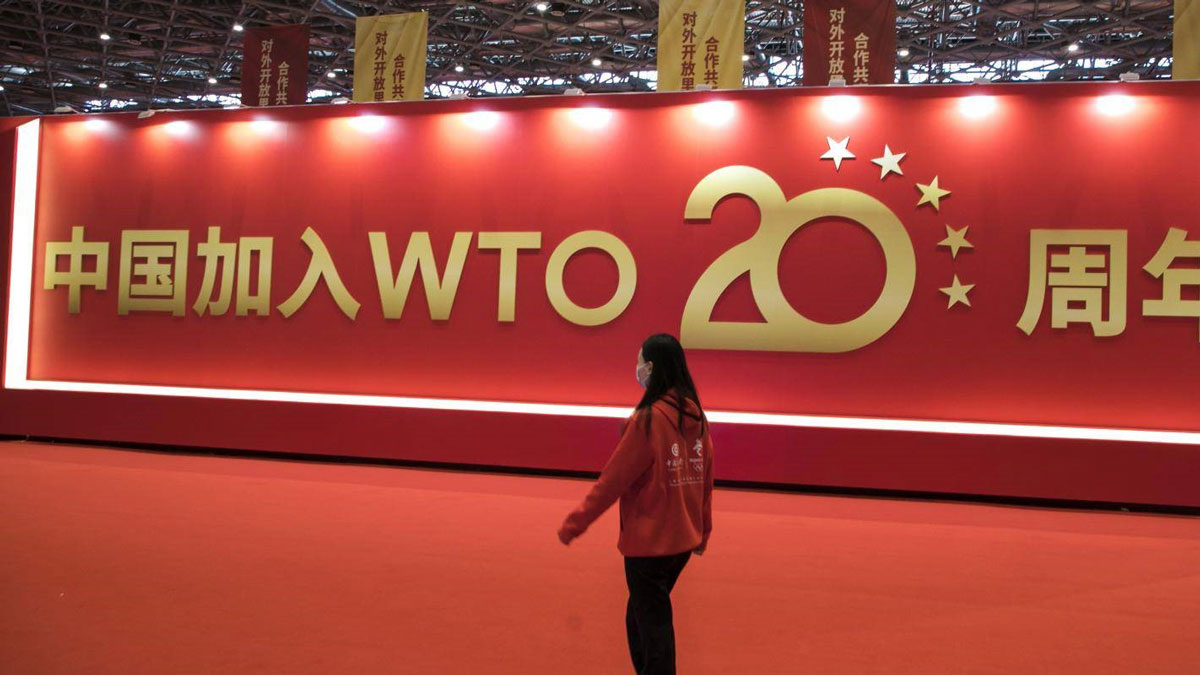The year 2021 marked the 20th anniversary of China’s accession to the World Trade Organization (2001), an event that has stimulated the unprecedented integration of the world’s largest transitional economy into the rules-based multilateral trading system. Since its entry, China has benefited significantly from enhanced trade flows made possible by its WTO membership, becoming the largest trader in goods and the second largest trader in services in the global economy today. Beijing’s efforts to implement its WTO accession commitments have generated profound changes in its domestic regulatory framework in the areas of trade and beyond.
While these developments have accelerated China’s economic rise, transforming the country into the manufacturing center of the world and unleashing a global buying spree by Chinese firms, they have also provoked a strong backlash against Chinese influence (Colantone and Stanig, 2018; Raess, 2021). The ongoing trade war between the United States (US) and China, which, at the time of this writing in July 2022, has completed its fourth full year and still has no end in sight under the US administration of President Joe Biden, further speaks to the potential for the long-term strategic rivalry between the world’s two largest economies in the years to come.
Looking back, the 20 years since China’s accession to the WTO provide excellent opportunities to take stock of the implications of China’s economic rise (for an assessment of China’s first decade in the WTO, see Zeng and Liang, 2013). In particular, they raise important questions about the impact of WTO membership on China’s domestic development, China’s influence on the evolving global economic governance structures, and government responses in countries that are engaging China economically, responses that in turn shape global trade governance (for a broader evaluation of the country’s trajectory in the international political economy, see Breslin, 2007; Zeng, 2019).
In the sensitive area of legal reform, efforts to implement its WTO obligations and commitments have introduced changes to the Chinese legal system. Even though barriers deeply entrenched in Chinese culture and society have impeded Beijing’s ability to fully comply with its WTO obligations, China’s growing integration into the rules-based WTO system has increasingly subjected it to WTO discipline in ways that have had transformative effects on Chinese society.
The domestic changes brought about by WTO membership have in turn increased China’s economic clout and its weight in the global trading system, generating growing frictions between Beijing and its trading partners. Consequently, this volume additionally examines how China’s rise has altered the power dynamics within the WTO. Contributing chapters suggest that China’s status as both the second largest economy in the world and the largest developing country has heightened the tensions between its preference for special and differential treatment (SDT), on the one hand, and the organization’s key underlying principle of reciprocity, on the other hand, precipitating heightened competition between the US and China that have threatened to derail major multilateral trade initiatives.
At the government level, frustrations with the difficulties of engaging China within the WTO have resulted in the revival of unilateral trade policies, as reflected in the recent trade war that Washington has launched against China. They have also led foreign governments to embrace the use of targeted, unilateral discriminatory measures to address trade concerns with China. Despite ongoing discussions of WTO reform, the substantial differences in the preferences and negotiation positions of the major players have continued to dim the prospect of multilateral trade cooperation. At the public level, China’s economic rise has raised important questions about the degree to which attitudes toward China may be conditional on factors such as the presence of compensatory welfare and labor market policies or bilateral political relations.
Download
© The Hinrich Foundation. See our website Terms and conditions for our copyright and reprint policy. All statements of fact and the views, conclusions and recommendations expressed in this publication are the sole responsibility of the author(s).








